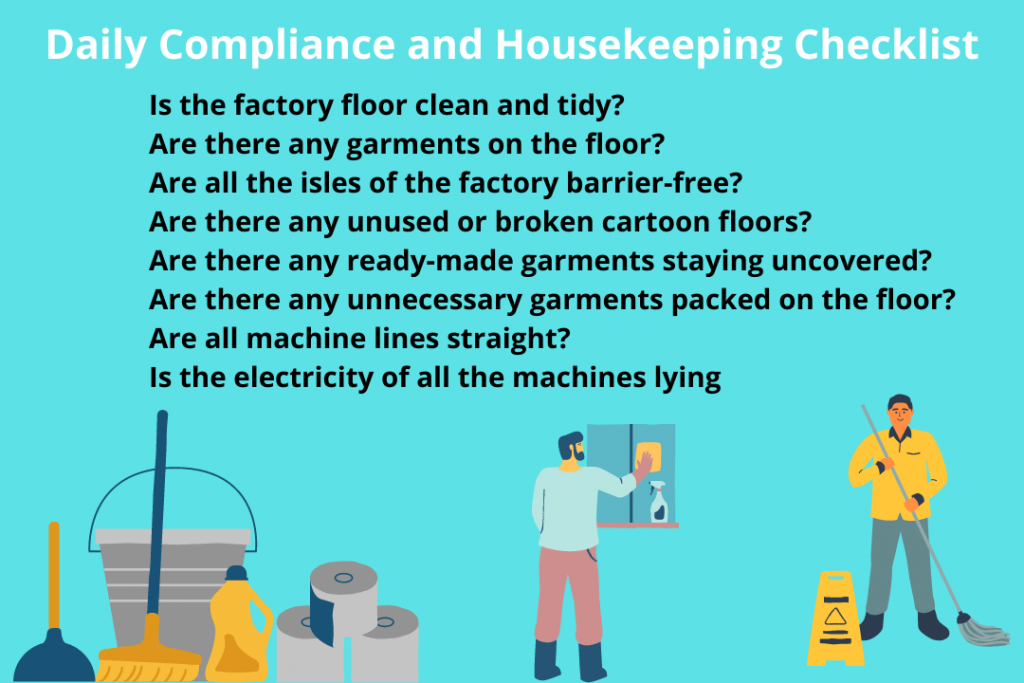Introduction: The garments industry plays a significant role in the global economy, employing millions of workers worldwide. However, amidst the bustling production lines and fast-paced operations, it is crucial to prioritize the health and safety of the workforce. Implementing robust health and safety requirements in the garments industry is not only a legal obligation but also a moral imperative. By adhering to these requirements, companies can protect their workers, enhance productivity, and establish a positive reputation within the industry. This article explores key health and safety requirements that should be upheld in the garments industry.
The garments industry is a place of thousands peoples work together. The safety risk is a big threat. Industry standards play a pivotal role in maintaining health and safety. Compliance with regulations, such as fire safety protocols and building codes, ensures that factories are equipped with appropriate emergency exits, fire suppression systems, and adequate escape routes. Regular inspections by regulatory bodies help identify and address any non-compliance issues. This proactive approach minimizes risks and encourages continuous improvement in safety practices.

What are Health and Safety Requirements in the Garments Industry?
- Workplace Layout and Design
- Machinery and Equipment Safety
- Handling Hazardous Substances
- Fire Safety
- Ergonomics for Worker Well-being
- Electrical Safety
- First Aid and Medical Facilities
- Training and Education
Workplace Layout and Design
Creating a safe and comfortable working environment starts with an effective workplace layout and design. It is essential to ensure that the workspace is adequately sized to prevent overcrowding and allow for safe movement. Sufficient lighting and ventilation must be provided to minimize the risk of accidents and promote overall well-being. Hazardous areas or processes should be appropriately segregated to minimize exposure and potential harm to workers.
Machinery and Equipment Safety
Garment production often involves the use of various machinery and equipment. Regular inspection, maintenance, and servicing of these machines are vital to prevent accidents and injuries. Safety guards, emergency stop buttons, and other relevant safety features should be in place to protect workers from hazardous machine components. Furthermore, comprehensive training programs must be conducted to ensure that workers are proficient in operating machinery safely.
Handling Hazardous Substances
The use of chemicals and other hazardous substances is prevalent in the garments industry. It is imperative to establish proper storage, handling, and labeling procedures for these substances. Adequate personal protective equipment (PPE) must be provided to workers exposed to hazardous materials. Material Safety Data Sheets (MSDS) should be made available, ensuring that workers have access to crucial information about the chemicals they handle.
Fire Safety
The risk of fire is a significant concern in any manufacturing setting, including the garments industry. Employers must prioritize fire safety by installing and maintaining fire alarms, extinguishers, and emergency lighting. Clear evacuation routes, prominently displayed emergency exit signs, and regular fire drills are essential to ensure that workers can quickly and safely exit the premises in the event of a fire. Additionally, all employees should receive thorough training on fire safety protocols.
Ergonomics for Worker Well-being
The garments industry involves repetitive tasks and prolonged periods of standing or sitting. Proper ergonomics is vital to prevent musculoskeletal disorders and enhance worker well-being. Employers should provide ergonomic workstations and equipment that minimize strain and promote correct posture. Regular breaks, task rotation, and training on proper lifting techniques are essential to prevent work-related injuries.
Electrical Safety
Electrical safety is a critical aspect of maintaining a safe working environment. Compliance with electrical codes and regulations is essential to prevent electrical hazards. Regular inspection and maintenance of electrical systems and equipment should be conducted to identify and rectify any potential risks. Proper grounding, insulation, and protection measures must be implemented to safeguard workers from electrical accidents.
First Aid and Medical Facilities
Prompt access to first aid and medical facilities is crucial for the well-being of workers. Adequately stocked first aid kits should be readily available, and designated personnel should be trained to provide immediate medical assistance when needed. Additionally, arrangements should be made for workers to access medical facilities in case of emergencies or when medical attention is required.
Training and Education
Comprehensive health and safety training is a cornerstone of ensuring a safe work environment in the garments industry. Regular training programs should be provided to all employees, including new hires and contractors. These programs should cover topics such as proper use of personal protective equipment (PPE), emergency procedures, hazard identification, and reporting mechanisms. Ongoing communication and awareness campaigns can
Conclusion
We described here the importance of proper ventilation, adequate lighting, ergonomic workstations, and the use of protective equipment for a safe and healthy work environment in the garments Industry. Find out how industry standards, training programs, and regular inspections contribute to the well-being of employees. Stay informed about the latest advancements in health and safety practices to promote a sustainable and secure future for the garments industry.
Protective equipment such as gloves, masks, and safety goggles are provided to mitigate risks associated with handling chemicals, machinery, or sharp objects. Regular training programs educate workers about potential hazards and teach them how to handle emergencies effectively.


